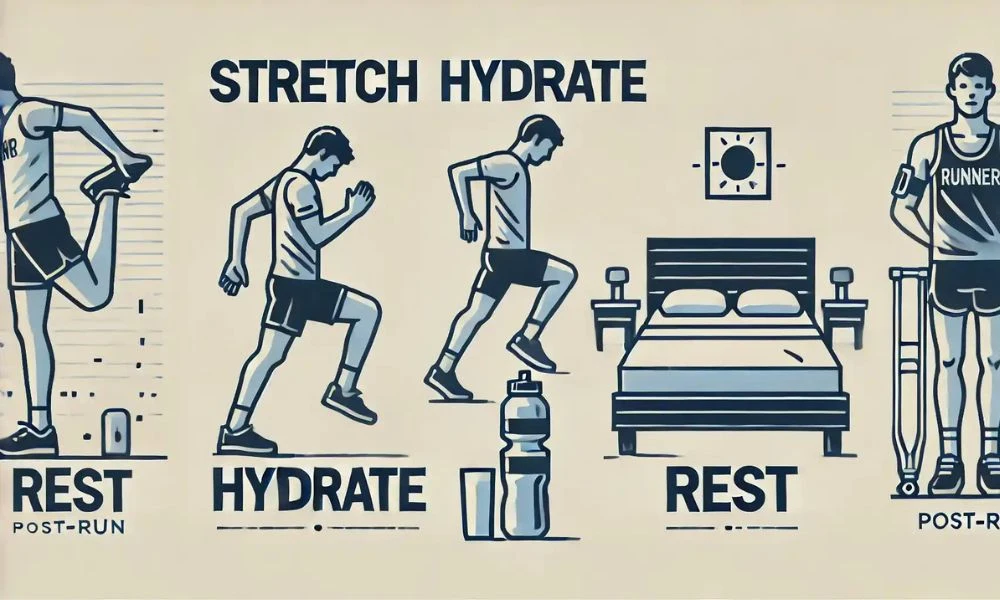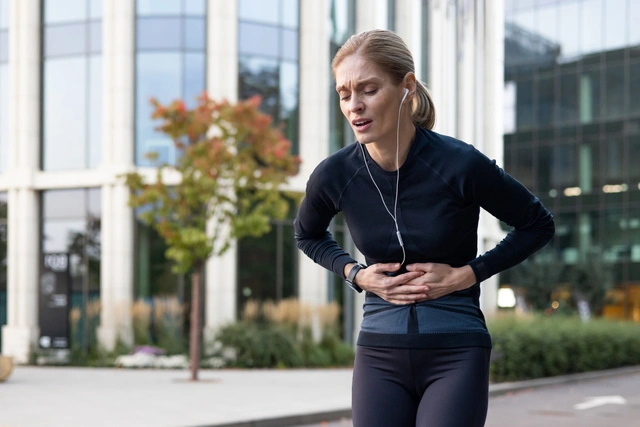If you run with a sports watch, you may see a notification that the recovery period will be several days after long or intense training sessions.
But did you pay attention to this? Many amateurs do not even consider recovery for various reasons, such as “I don’t have time” or “I’m not a professional athlete.”
Meanwhile, recovery is a full-fledged part of the training process. Amateurs, whose bodies experience stress not only because of physical activity but also because of work and daily stressful situations, need it almost more than professionals.
To change the approach to recovery, it is important to understand that training is only the first stage in the process of positive changes in the body and working for a result, it is stress that forces the body to adapt. The adaptation itself occurs during the recovery period. If it is not enough, the most intense training will only harm.
That is why effective work is based on a balance of sufficient training load (they should be relatively easy) and high-quality recovery, during which the body should have time to absorb the load. Today, we will tell you about the main methods of recovery that every amateur can use.
Table of Contents
Recovery Tips

1. Take Time to Cool Down & Stretch
When time is limited, many amateurs neglect warm-up, cool-down and stretching, immediately proceeding to the main part of the workout.
A proper cool-down helps regulate your breathing and heart rate while relaxing your muscles. Aim for a cool-down lasting at least 5-10 minutes.
Meanwhile, smoothly “introducing” the body into a state of stress, which is an intense physical activity, and returning to the usual regime, as well as working with clogged muscles, is one of the easiest ways to prevent injuries and make training as comfortable as possible.
2. Nutrition and Hydration
For proper recovery, eating right and getting hydrated is equally important. Your diet should contain the required proteins and carbohydrates for energy and muscle tissue growth.
Specialized sports nutrition developed for cyclic sports can help replenish the reserves of elements in the required dosages.
Also, mild dehydration after a run is normal, but rehydration is important. A good rule of thumb is to drink one and a half liters of water for every kilogram of lost body weight. However, there’s no need to be overly precise—drink when thirsty. Water is sufficient for runs under an hour, but you’ll need to replenish electrolytes for longer runs as well.
In addition, it is necessary to maintain water-salt balance and consume microelements that are necessary for cyclic loads:
For example, magnesium, the deficiency of which affects the rate of fatigue and can provoke cramps, or iron, the level of which after a marathon can drop sharply, seriously affecting the athlete’s overall well-being.
3. Get High-Quality Sleep

An amateur who actively trains, works, and tries to devote enough time to family and friends usually dreams only of a good night’s sleep.
Goal-oriented athletes are ready to get up at 5 am to have time for training before work. Meanwhile, sleep is one of the most important means of recovery. Therefore, try not to sacrifice it to your plans; an hour of sleep will be more useful than an early workout if you are not feeling well.
Try to make a sleep schedule and follow it as scrupulously as a training plan: Go to bed and wake up simultaneously and ensure that the bedroom has comfortable conditions: fresh air and no light, which prevents the release of melatonin, the sleep hormone.
4. Active Run Days
Recovery can be passive or active. The latter type includes recovery running, which involves running at a low heart rate.
This type of training ensures the flow of venous blood to the muscles, promotes the removal of waste products (lactic acid and toxins), and also helps the cardiovascular system recover from high loads.
Note that each person has their heart rate range for different types of training.
To determine your range, you can take a metallography test, which will determine your heart rate zones, aerobic threshold (AeP), anaerobic threshold (AnP), maximum oxygen consumption (VO2max), and metabolic equivalent (METS).
5. Massage or Foam Roll Sore Muscles
If your muscles are very tight, stretching will not help—you need to apply a stronger and more targeted impact.
The best way is a regular sports massage, but if you do not regularly have the opportunity to visit a competent specialist, you can do a self-massage using special equipment.
Rolls and balls for self-massage allow you to achieve the effect of myofascial release (impact on muscles and connective tissues for their complete relaxation) at home. You can find many videos and information on self-massage techniques with rolls and balls on the Internet.
It is important to do it regularly: the first sessions can be quite painful, but with regular performance, you can get rid of even chronic pain associated with muscle clamps.
6. Consider Cold Therapy
While not essential, ice baths could boost your recovery after a run. Proponents believe they help relieve muscle soreness and fatigue; some studies support this claim.
However, the research overall needs to be more conclusive. If you don’t want to make ice baths a regular part of your post-run routine, don’t worry!
Studies indicate that an ice bath isn’t more effective than an active recovery cool-down. If you’re cooling down your muscles, skipping the ice bath won’t hinder your recovery.
Wrapping Up
Effective recovery is crucial for running, no matter your athletic level.
Prioritizing recovery can significantly enhance progress, prevent injuries, and boost overall performance and well-being.
Training hard is important, but training smart makes the difference. By prioritizing recovery, you’ll maximize the benefits of your efforts and achieve the best results.




